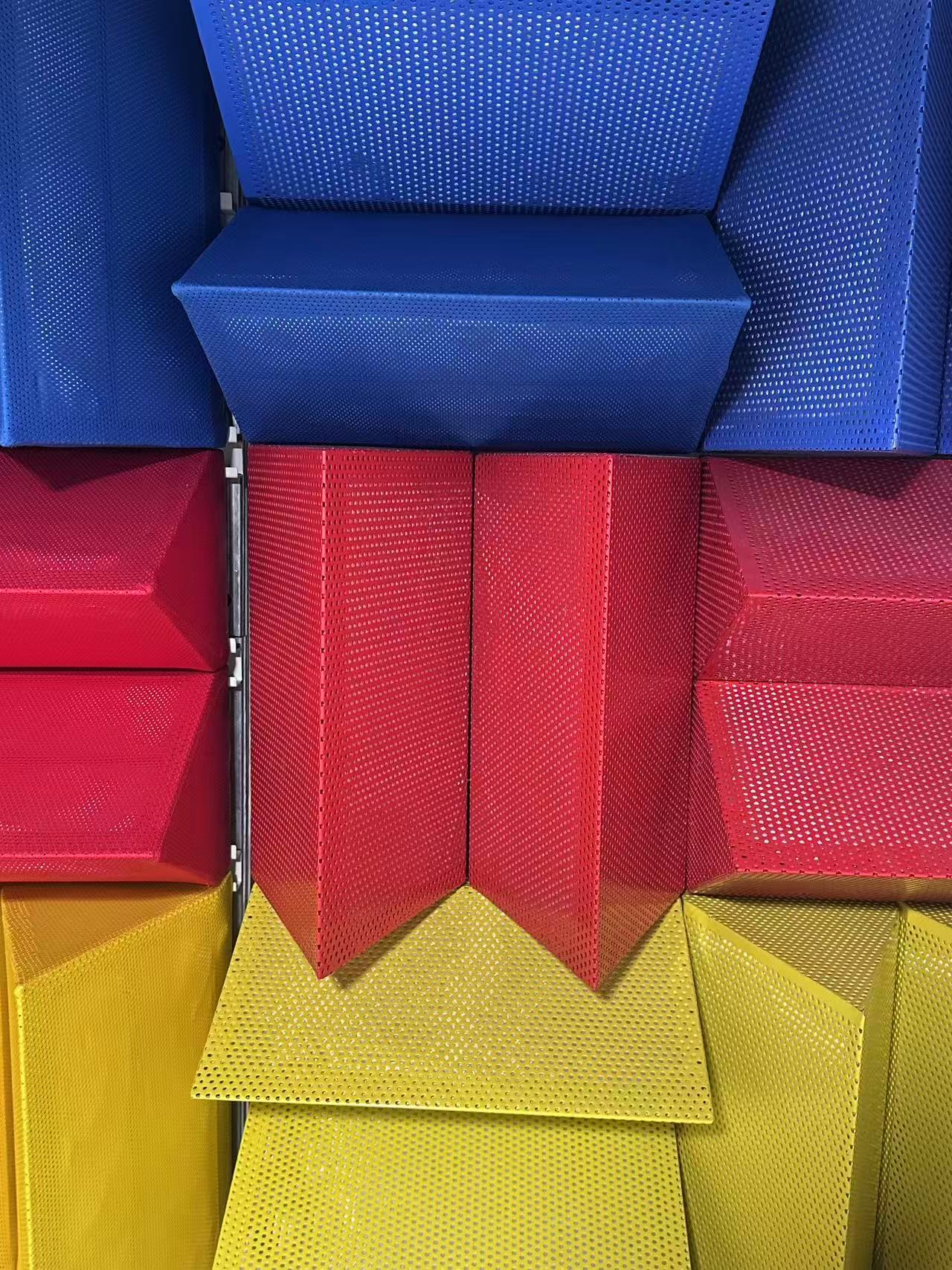Patented Sound Absorption and Attenuation System
The core technology of this system is based on the patented product: Multi-Structure Polymer Composite Material for Sound Absorption, Attenuation and Insulation with the patent number 200720155131.2. It achieves high-efficiency sound absorption, stable sound insulation and flexible application through modular design. The technical parameters and structural characteristics are as follows:
2.1 Types and Characteristics of Core Sound-Absorbing Structures
The system includes two core structures: wedge absorbers and flat sound-absorbing panels, designed for different acoustic requirement scenarios. The specific parameters and advantages are as follows:
Wedge Absorber Structure
Structural composition: It uses a metal frame as the supporting base, filled with high-damping sound absorption and attenuation material inside, and covered with flame-retardant lining cloth and flame-retardant exterior decoration outside, forming a multi-layer composite protective structure.
Core characteristics: The sound absorption coefficient is ≥0.99. It has properties such as non-weathering, hydrophobicity, rust resistance of the metal frame, and flame retardancy (complying with national fire protection standards). Its service life can reach more than 15 years, and it also balances surface flatness and decorativeness, suitable for various indoor and outdoor environments.
Flat Sound-Absorbing Panel Structure
Structural composition: It takes a high-strength metal frame as the carrier, filled with high-density glass wool (bulk density ≥48kg/m³) inside. A dedicated sound-absorbing film (thickness 0.1-0.2mm) is attached to the inner side of the panel, forming a three-layer composite structure of "frame - sound-absorbing layer - damping layer".
Core characteristics: The sound-absorbing film reduces the reflection loss of sound waves on the panel surface, keeping the sound absorption coefficient stable at 0.99. The sound insulation capacity is increased by 15-20dB in the medium and high-frequency noise range (1000-8000Hz), and its acoustic performance is significantly better than that of traditional flat sound-absorbing materials.
2.2 Advantages of Modular Production and Installation
Production mode: Both core structures adopt standardized modular production, with dimensional error controlled within ±1mm, ensuring structural consistency and acoustic performance stability during batch application.
Installation characteristics: It adopts a combined installation structure of snaps and bolts, without on-site cutting or welding. A single person can complete disassembly and assembly. After disassembly and reinstallation, the deviation of acoustic parameters is ≤2%, which will not affect the overall sound absorption and insulation effect.
Application value: This characteristic greatly shortens the installation period (reduced by more than 60% compared with traditional on-site construction) and facilitates later maintenance, partial replacement or scenario transformation (such as acoustic adjustment in spaces like conference rooms, recording studios, and industrial workshops), meeting the long-term use needs of diverse scenarios.
2.3 Technical Application Scenarios
Based on its high sound absorption coefficient, stable durability and flexible installation characteristics, this system can be widely used in:
Professional acoustic spaces: Scenarios with high requirements for sound absorption accuracy, such as recording studios, broadcasting studios and acoustic laboratories.
Industrial noise reduction scenarios: Industrial noise control projects such as generator rooms, workshops and fan rooms.
Public building spaces: Places that need to balance acoustic performance and decorativeness, such as theaters, conference rooms and libraries.

//
Patented Sound Absorption and Attenuation System
Patented Sound Absorption and Attenuation SystemThe core technology of this system is based on the p
Request a Quote





